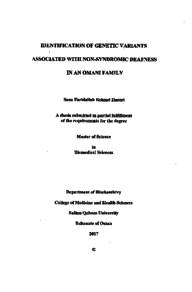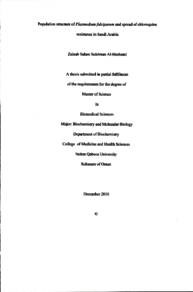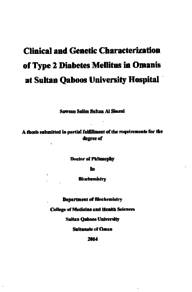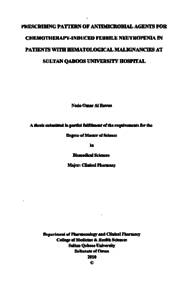Document
Identification of genetic variants associated with non-syndromic deafness in an Omani family.
Publisher
Sultan Qaboos University
Gregorian
2017
Language
English
English abstract
Background: Hearing impairment is one of the most common sensory disorders world wide affecting over 5% (360 million persons) of the world's population. The national prevalence of bilateral hearing impairment was 55.3 per 1000 in 2008. Genetic factors are responsible for almost 50% of hearing loss cases. Non-syndromic hearing loss (NSHL) is the most common form of hearing loss accounting for up to 70% of the cases. Mutations in more than 80 genes have been reported to cause this form of hearing loss. Next-generation sequencing (NGS) is technically feasible and a cost effective method for detection of causative variants in Mendelian related disorders, including hereditary deafness especially in small families with inadequate number of affected individuals.
Aim: To identify deafness causing variants in an Omani family.
Methods: In this study, 20 variants were examined in 16 members of one family diagnosed with non-syndromic hearing loss. Whole-Exome Sequencing was run for 3 individuals (1 normal and 2 affected) and the candidate variants were chosen based on the inheritance mode. Sanger sequencing method was used for variant confirmation and also to identify the genotypes of all individuals available. Phyre2, RasMol and splicing prediction tools were used to predict the effect of the defect on protein structure.
Results: The hearing loss in this family is most probably due to autosomal dominant inheritance. The phenotypes segregated with the genotypes on variant rs376040866 on TMC1 gene which causes deletion of 3 nucleotides at the splice site of exon 8 and this results in deletion of one amino acid in the protein pGlu82del. It was predicted that this deletion has no effect on the splicing of the exon but the protein might be affected and this needs to be further studied.
Conclusion: This family has a strong history of nonsyndromic hearing loss and by applying strategies and selection criteria to NGS screening, causal variants can be identified.
Member of
Resource URL
Category
Theses and Dissertations







